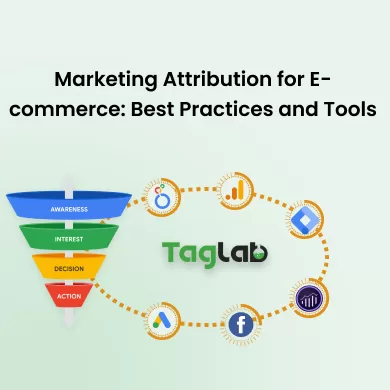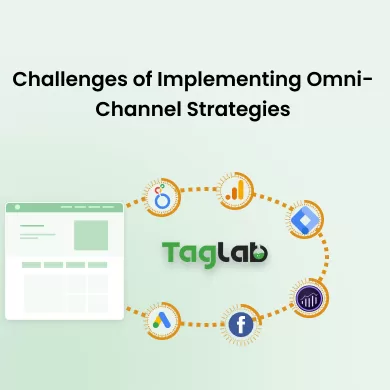Your cart is currently empty!
Direct Traffic ROI
Posted by:
|
On:
|
Direct Traffic ROI (Return on Investment) is a key performance indicator (KPI) that measures the profitability of direct traffic, which refers to visitors who come to a website by typing the URL directly into their browser, using bookmarks, or clicking on links from non-traceable sources. This metric calculates the return generated from direct traffic relative to the cost associated with acquiring and converting these visitors, helping businesses assess the financial success of their direct traffic channels.
Detailed Explanation
What is Direct Traffic ROI?
Direct Traffic ROI refers to the ratio of revenue generated by direct traffic to the costs incurred in acquiring and converting these visitors. It is a crucial metric for understanding whether the direct traffic to a website is generating more revenue than it costs. A positive ROI indicates that direct traffic is contributing to profitability, while a negative ROI suggests that the associated costs outweigh the revenue generated.
How it Works?
To calculate Direct Traffic ROI, businesses subtract the cost of acquiring and converting direct traffic from the revenue generated by these visitors, and then divide that result by the cost. The formula is:
Direct Traffic ROI = (Revenue – Cost) / Cost
A higher ROI indicates that direct traffic is effectively driving revenue relative to the investment made in engaging these visitors.
Types of Direct Traffic ROI Metrics
- Gross ROI: The total return generated from direct traffic before deducting any costs or expenses.
- Net ROI: The return generated after deducting all associated costs, including marketing, content creation, and other expenses related to attracting and converting direct traffic.
- Return on Ad Spend (ROAS): If direct traffic includes visitors from offline campaigns, this metric focuses on the revenue generated per dollar spent on such campaigns.
- Cost Per Acquisition (CPA): A related metric that calculates the cost of acquiring a customer through direct traffic.
- Lifetime Value (LTV) ROI: Measures ROI by considering the lifetime value of customers acquired through direct traffic, offering a long-term view of profitability.
Illustrative Scenarios
Examples
- A website generating $15,000 from direct traffic with acquisition costs of $3,000 results in an ROI of 400%, indicating a highly profitable channel.
- A campaign targeting direct traffic with a Return on Ad Spend (ROAS) of 5:1 means that for every $1 spent on offline marketing efforts, $5 is generated in revenue.
Segmentation
Analyzing Direct Traffic ROI by different segments, such as geographic location, device type, or time of day, can provide deeper insights. For example, segmenting by device type might reveal that mobile users have a higher ROI than desktop users, guiding future optimization efforts.
Factors Influencing Direct Traffic ROI
- Brand Recognition: Strong brand recognition can lead to higher direct traffic and better ROI as users are more likely to visit the site directly.
- User Experience: A seamless and optimized website experience, including fast load times and intuitive navigation, can enhance conversion rates and improve ROI.
- Offline Marketing Efforts: Investments in offline marketing, such as TV ads or print media, can drive direct traffic and impact ROI.
- Content Quality: High-quality, relevant content that resonates with users can drive repeat visits and improve ROI.
- Customer Loyalty: Strong customer loyalty programs can increase the likelihood of direct visits, thereby improving ROI.
Strategies to Improve Direct Traffic ROI
- Enhance Brand Recognition: Invest in brand-building activities that increase awareness and encourage direct visits to your website.
- Optimize User Experience: Ensure your website is optimized for both desktop and mobile users, with fast load times, easy navigation, and clear calls-to-action.
- Leverage Offline Marketing: Use offline marketing channels strategically to drive direct traffic, ensuring that the user experience aligns with the brand message.
- Improve Content Quality: Focus on creating high-quality, engaging content that encourages users to visit your site directly for updates or new information.
- Strengthen Customer Loyalty Programs: Implement or enhance customer loyalty programs that encourage repeat visits and direct traffic.
Direct Traffic ROI Benchmarks
Direct Traffic ROI benchmarks can vary depending on industry, brand strength, and audience behavior. For example:
- ROI: Typical benchmarks for direct traffic ROI range from 200% to 600%, depending on the effectiveness of brand recognition and user experience.
- Return on Ad Spend (ROAS): Benchmarks for ROAS can range from 3:1 to 10:1, particularly if offline marketing campaigns are involved.
- Cost Per Acquisition (CPA): Industry benchmarks for CPA through direct traffic can vary widely, depending on the product or service.
Comparing your Direct Traffic ROI against industry benchmarks helps set realistic goals and optimize your strategies.
Tools for Measuring Direct Traffic ROI
- Analytics Tools: Platforms like Google Analytics and Adobe Analytics offer detailed insights into direct traffic performance and ROI metrics.
- CRM Tools: Customer Relationship Management (CRM) tools, like Salesforce or HubSpot, can track customer journeys and attribute revenue to direct traffic sources.
- Attribution Tools: Multi-touch attribution tools, such as Ruler Analytics, help assess ROI across different touchpoints, including direct traffic.
Common Pitfalls and Mistakes
- Focusing Only on Volume: While the volume of direct traffic is important, it does not always correlate with high ROI; focus on the quality and conversion rates of direct traffic.
- Ignoring User Experience: A poor user experience can lead to low conversion rates and reduced ROI, even with high direct traffic.
- Overlooking Offline Marketing Impact: Failing to account for offline marketing efforts in ROI calculations can lead to an incomplete understanding of direct traffic performance.
- Neglecting Mobile Optimization: Failing to optimize your website for mobile users can lead to poor user experience and lower ROI from mobile direct traffic.
- Inconsistent Monitoring: Failing to regularly monitor and adjust direct traffic strategies can lead to missed opportunities for improving profitability.
Frequently Asked Questions
What is Direct Traffic ROI?
Direct Traffic ROI measures the profitability of direct traffic by comparing the revenue generated to the costs associated with acquiring and converting these visitors.
Why is Direct Traffic ROI important?
Direct Traffic ROI is important because it helps businesses assess the financial success of their direct traffic channels and optimize strategies for better profitability.
How can I improve my Direct Traffic ROI?
Improving Direct Traffic ROI can be achieved by enhancing brand recognition, optimizing user experience, leveraging offline marketing, improving content quality, and strengthening customer loyalty programs.
What factors influence Direct Traffic ROI?
Factors influencing Direct Traffic ROI include brand recognition, user experience, offline marketing efforts, content quality, and customer loyalty.
What are typical benchmarks for Direct Traffic ROI?
Benchmarks vary, with ROI typically ranging from 200% to 600%, and ROAS benchmarks from 3:1 to 10:1, depending on industry and brand strength.




